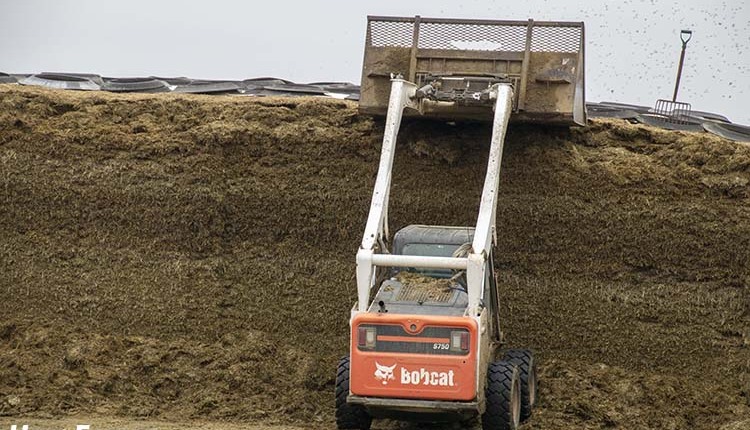
A chill is in the air, and the choppers are tucked away for winter maintenance. Out of the silos comes the fruits of the summer’s labors in the form of (hopefully) high-quality silage and haylage.
“Removal of feed from a bunker silo or a drive-over silage pile is a daily task on the farm that has a lot of potential for serious injuries,” warns James Carrabba, agricultural safety specialist with the New York Center for Agricultural Medicine and Health. “These dangers include falls, engulfments, runovers, and entanglements, which can result in serious injuries or death.”
Carrabba notes that there have been situations where feeders have fallen from the edge of a silage face and dropped 15 to 20 feet onto the concrete pad below. He also cites numerous cases where the silage face collapsed and buried a worker who was standing near the face.
“Even the most meticulously maintained silage face can collapse suddenly,” Carrabba writes in a recent issue of Cornell University Extension’s Field Crops News.
Bad habits can quickly develop with routine actions such as loading, mixing, and feeding silage. Frequent reminders are needed to keep employees out of harm’s way. Carrabba lists these dozen safety guidelines to ensure safety during the silage feedout process.
1. Only authorized personnel should be in the silo area. Keep visitors and children away and post appropriate warning signage such as “Authorized Personnel Only” and “Danger, Keep Out, Silage Can Avalanche.” Post bilingual signs if necessary. Consider fencing off the horizontal silo area.
2. Wear high-visibility clothing or vests.
3. Use the “buddy system” and have a second worker present whenever working around silage. Maintain communication and visibility with each other while working in or near silos.
4. Never walk up to the face of the silage. Stay back a distance that is three times the height of the face. Document the face height so that workers can more accurately gauge this distance. You could mark the safe distance from the silage face with safety cones.
5. Use a loader bucket to collect silage for samples. Collect the sample from loader bucket when it is a safe distance from the silage face.
6. When working on top of the silage, stay back from the leading edge at least 8 to 10 feet. Wear footwear with a nonslip tread. Some guidelines have suggested staying back from the edge as far as the face is tall. Use long-handled tools to pull back the tires and plastic from the leading edge. If possible, throw tires and plastic off the sides of the silo.
7. Remove tires, sidewalls, gravel bags, and plastic or coverings in the daylight. If this must be done at night, provide adequate lighting.
8. Minimize spoilage and manage it safely. Make every effort to minimize it through best management practices for maintaining forage quality (inoculants, high density, oxygen-limiting plastic, plastic along walls, and so forth). If spoilage has to be removed, use equipment operating from the ground level to do so, rather than manually removing it by hand.
9. Shave down the silage face when removing silage. Keep the silage face as smooth as possible. The silage face could be angled back slightly toward the pile to further reduce overhang situations. To prevent potential overhang situations, don’t engage a loader bucket at the bottom of the silage face.
10. Do not drive parallel and in close proximity to the silage face with loaders or other heavy equipment.
11. Never park vehicles or equipment close to the silage face.
12. Always shut off equipment, such as a silage defacer, prior to servicing or adjusting.

